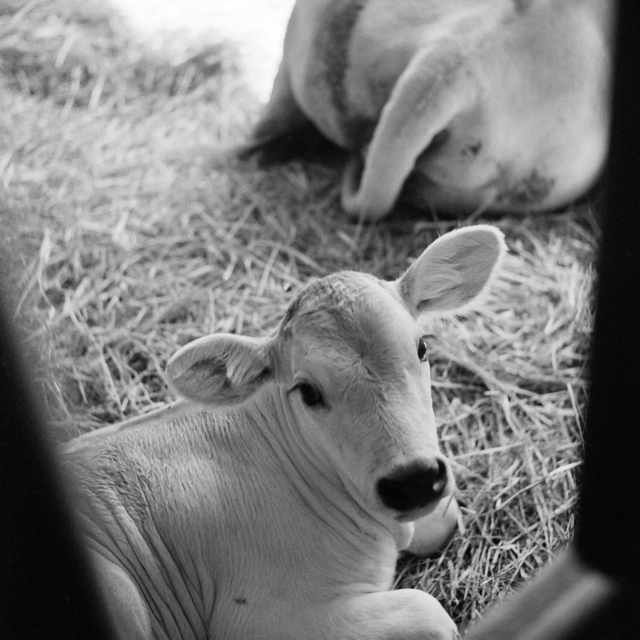Whenever someone asks me about the quintessential Florentine dish, two things immediately come to mind, which should also be an indication of the carnivorous Tuscan diet. The first is panini al lampredotto – tripe sandwiches, which are not everyone’s cup of tea (but they should be!). The other is the colossal bistecca fiorentina – Florentine steak.


Curiously, the Italian word bistecca is actually borrowed from the English “beef steak.” Pellegrino Artusi has a recipe for bistecca fiorentina in his 1891 cookbook, which is still – as with all of Artusi’s recipes – the classic way to cook a real bistecca. He rightly describes which cut of meat is used to those who may be unfamiliar to the Tuscan specialty and points out that this “excellent dish” may not be widespread throughout the newly formed peninsula because in many places the butchers were still butchering only older, working animals.
In fact, the provenance of a bistecca fiorentina determines how genuine it is. The real bistecca fiorentina comes from an ancient Tuscan breed, one of the world’s largest, the Chianina cow. These lean, tall, perfectly white creatures were once traditionally used as working animals for their size and strength, but they also have extremely prized and tasty meat, which is not without a set of strict rules when it comes to cooking and eating it.

These photographs were taken on the organic farm of Poggio Alloro near San Gimignano, an hour outside of Florence. Every summer the barn is busy with the births of new baby cows. Even the newborn calves are evidence that the Chianina breed are one of the largest and heaviest cattle in the world – newborns can weigh over 50 kg! Mature bulls reach over 6 ft tall. At Poggio Alloro, they raise about fifty Chianina cattle on their lolling hills that look up to the towers of San Gimignano for their farm restaurant. Here the bistecche are expertly cooked by Amico, the farm’s owner.


In a restaurant, real bistecca fiorentina will be priced by the weight – always. You can usually expect to pay a minimum of 35 euro per kilogram but more commonly towards the 50 euro mark. If you’re dining out in Florence, try it at some of these good old trattorie: Casalinga, Alla Vecchia Bettola, Trattoria Mario or Trattoria Armando, just to name a few favourites. Traditional sides are roast potatoes, sautéed spinach or silverbeet and white cannellini beans – and plenty of Tuscan bread to mop up the juices.
The perfect bistecca fiorentina:
- It must be eaten rare. That means not just blushing pink inside, but bloody. For those that like their meat well done, there are two options: either be adventurous and try this as it should be eaten or order something else! Do not be tempted to order it then ask for it to be cooked longer – it dishonours this beautiful, lean meat, which would only turn into something the texture of an old leather boot the longer it cooks.
- The bistecca must be on the bone (a T-bone), with the amazingly tender fillet attached and no thicker than “two fingers” deep. A portion is generally 600-800 grams, so don’t be surprised when ordering a bistecca fiorentina and the waiter brings out a hunk of meat weighing over a kilogram – it’s generally meant to be shared amongst the table.
- It must be cooked over burning hot, red coals. For a steak weighing over a kilogram, let it rest for around 10-15 minutes, covered, before cutting into thick slices and serving.
- No sauce – the only thing this tasty steak needs is some salt (after it has come off the grill), some freshly cracked black pepper and perhaps a drizzle of extra virgin olive oil. As Artusi says, “the beauty” of its rareness is that when you cut into it, out pours the most wonderful “sauce” on the plate. Some serve it with a wedge of lemon but purists will tell you this is a no-no.




Comments
Lovely. I didn’t know about the cow breed, but it reminds me of the dinner in Tuscany with the photo group. We don’t eat meat much outside of Italy, and it’s because you just can’t get quality and taste like that anywhere else. But rest assured when we are there, we are suddenly both ravenous carnivores!
I know exactly what you mean! Also I think there’s something about eating the local food in a place where the meat comes from RIGHT THERE! Nothing like it! 🙂
Ah, you’re making me miss Italy even more! I got back on Sunday and have been pining for our outdoor BBQ and the incredible food ever since…
We cooked bistecca alla fiorentina for friends who’d never had it before while we were away – beautifully bloody, with just a sprinkle of salt and a rub of rosemary and accompanied by fagioli all-ucceletto…I can’t think of many better meals!
Lovely post and beautiful click of the calves! A wonderful speciality. Local food is great and we should support the farmers that are in our vicinity…
Cheers,
Rosa
That last photo of the cow’s face- so sincere! I’m fascinated by bistecca florentina and those amazing animals.
Fantastic article as always. There’s another Hidden treasure I’d like to mention. Località Omomorto near Barberino Di Mugello. The name of the place is Trattoria Nandino, a family owned restaurant with two rooms with a fireplace in which the owner cooks the bistecca on ,right before your eyes. The quality is one of a kind as you slice through it like butter, literally melting in your mouth. The only problem is you need to reserve your table 2 months in advance!
Jen – could u please give me info how to contact & more this farmhouse restrauant? Have tried googling from info your comment 6 of aug 2, 2012 @11:51pm Emiko Davies article on The Perfect Bistecca Fiorentina – thank u – H Lewis
I think it’s actually called Osteria Nandone – they have a facebook page: https://it-it.facebook.com/pages/Osteria-di-Nandone-Omomorto/315653214640
Wow! You’ve got my mouth watering over this dish. Great blog post. You keep writing and I promise to keep reading. Thanks again
Been there, done that. Would immediately do it again and can recommend eating bistecca fiorentina at Poggio Allore to anyone!!!
Hi,
Love you blog.
I will be in Florence in a two weeks. What is your favourite restaurant for the bistecca?
Hi Lincoln, thanks – my favourites are the ones in this post, you must have missed them, they’re just above the “rules” for the perfect bistecca fiorentina (they’re linked too, so just click on the names and you’ll go to the websites). I’d also add Brindellone and Sostanza to this list!
My wife and I have been to Firenze several times and their bistecca is without peer. We live in Texas and suffice it to say, we love our steak but there was literally no comparison. It is always good to do your homework whenever dining in a different country, to learn the customs and practices. When our waiter came to our table and we ordered the steak, he looked at us and asked “how we wished it cooked”. We knew it was a test, almost daring us to say medium or medium-well. I looked at him with a bit of a puzzled look and said “Um, rare. I wasn’t aware you would cook Bistecca Fiorentina any other way” The grin he gave us said it all. We didn’t even use salt or pepper. Our waiter watched us drizzle just a bit of olive oil on it and from there on in, we were treated like locals. It’s always good to immerse yourself into the local culture and the rewards will be well worth it.
That is perfect, to me this is what traveling is all about (especially traveling with your stomach as I like to do)! You’ve said it so well, it’s so important to know the customs and practices in a place you travel to, and it does lead to very good experiences!
I was in San Gimignano in 1987 for my 40th birthday and I had a dinner I will never forget at a little place off the main square, one of those “ma and pa” places where mom does the cooking and dad does the serving. After a one-on-four run-in with some ugly American tourists (Yes, I am an American) over their rude behavior in the restaurant which ended with me telling them to pay their bill and get out, I chatted with the waiter/owner and told him it was my birthday and, yes, I would be spending it alone. I didn’t mention I was a travel writer on a 3 week tour of Rome, Florence and Venice. He asked what I wanted to eat and I just told him, “Bring me whatever you do best.” Well, in due course out came the best bistecca fiorentina I’ve ever had with the sides you mentioned. He had gone over to an old, dusty wine rack near the front door and unlocked it with a big key. He looked at the bottles and finally pulled out one that was very dusty and brought it over to the table. The label was so faded I couldn’t even read it. He opened the bottle and in a bit the bouquet of the wine filled the small dining room. When he went off to the kitchen I got a good look at the bottle. It was a Chianti of no name I recognized but it had the black rooster and the vintage — 1947, the same year I was born. Dessert was very simple, a bowl of perfect sweet cream topped with shaved dark chocolate and some little dessert biscotti. When I was done I motioned for the bill and got up and walked back to the kitchen entry. There sitting in the corner with one eye on the grill and another on a small television watching some Italian soap was the ma-turned-chef. In my not-very-good Italian I thanked her for the wonderful birthday meal and she gave me a big grin. I turned around and went back to the table and found a bill on a saucer. I looked at the bill which had a few scribbles on it and a number in lira (strangely, I don’t remember exactly how much it was) that I realized didn’t begin to cover the cost of the dinner, let alone the wine. I did some quick mental calculations and plopped down a pile of lira, all I had, and USD 20 bill underneath them. He didn’t even look at the money as he showed me to the door and we said good bye. Standing outside looking at the menu card was another American tourist family. I told them that the food was excellent and if their manners were good they’d eat like kings. And off I wandered full and happy. The only way to be in Italy.